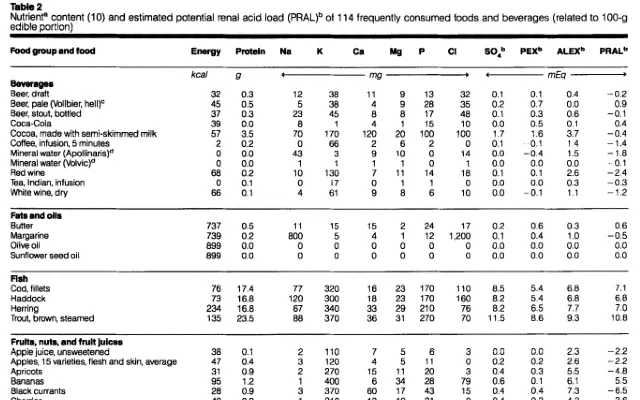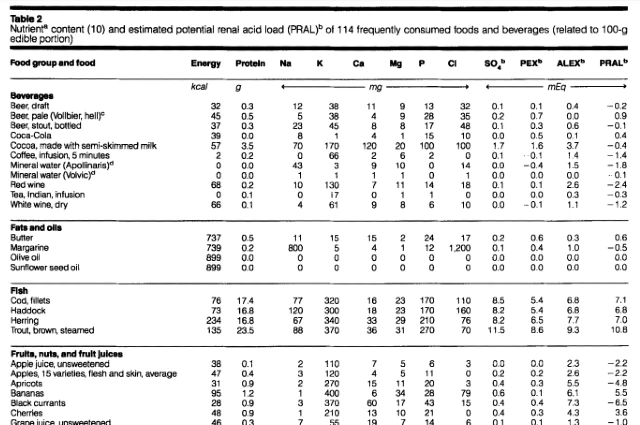
PRAL Food Charts Estimating Urine pH
PRAL food charts currently provide many people with a tool for measuring alkaline diets. Because the calculation is scientifically sound. So this is a review of an early study of the mechanics of Potential Renal Acid Load.
Citation for PRAL Food Charts Estimating Urine pH
This is a Foodary review of:
Remer, Thomas, and Friedrich Manz. “Potential renal acid load of foods and its influence on urine pH.” Journal of the American Dietetic Association 95, no. 7 (1995): 791-797.
At the time of writing, this study has been cited by 717 other studies.
PRAL Food Charts Purpose
The purpose of this study was to calculate PRAL (Potential Renal Acid Load) values for 112 common foods. Because at the time of the study, PRAL was a new concept. So this study was part of the proof of concept for PRAL.
Jargon-free Abstract
In the jargon-free abstract I present the key points of the original abstract. Replacing jargon with terms more familiar to unqualified people interested in food as it relates to health. Note that my selection of jargon terms might not match yours. So please leave a note in the feedback form near the end of the page if you need clarification.
Importantly, PRAL (Potential Renal Acid Load) is jargon. But I include it in this section as it is a key term that you should know if you read Foodary information.
- Background / Introduction
- The PRAL calculation…
- Is based on how our bodies work. As distinct from acid/alkaline ash diet calculations.
- Yields an estimate of kidney acid burden.
- Depends on food intake.
- Objectives
- The purpose of this study was to calculate the PRAL value of some common foods.
- Methods
-
- Nutrients from food charts were used to calculate PRAL for each day’s food.
- PRAL values were used to calculate averages for food groups.
- Estimates of organic acids were used to calculate daily Acid Burden.
- Results / Findings
- The PRAL calculation allows us to predict the effects of diet on the acidity of urine.
Original Abstract
The purpose of this study was to calculate the potential renal acid load (PRAL) of selected, frequently consumed foods. A physiologically based calculation model was recently validated to yield an appropriate estimate of renal net acid excretion (NAE); the model depends primarily on nutrient intake data. When nutrient data from actual food composition tables were used, the calculation model yielded PRAL values that ranged from an average maximum of 23.6 mEq/100 g for certain hard cheeses over 0 mEq/100 g for fats and oils to an average minimum of approximately −3 mEq/100 g for fruits and fruit juices and vegetables. By means of these PRAL data (summed according to the amounts of foods and beverages consumed daily and by an estimate of excretion of organic acids [based on body size]), the daily NAE can be calculated. This calculation methodology, primarily based on PRAL, allows an appropriate prediction of the effects of diet on the acidity of urine. For practical applicability in dietetic prevention of recurrent urolithiasis or in other fields of dietetics, the additionally determined correlation (r=.83; P<.001) between NAE and urine pH can be used to ascertain NAE target values for a desired urine pH modification.
PRAL Food Charts Estimating Urine pH Conclusions
Using daily PRAL values with estimates of organic acid excretion allows us to estimate urine pH.
Urine pH can be predicted reliably and consequently can be adjusted to a target pH
Modifying urine pH is helpful in treating several types of urinary tract stones.
Several diseases encountered in dietetics could benefit from application of dietary means to modify urine pH in people. One of these is urolithiasis
Finally, other benefits from PRAL diets arise in sports and for menopause problems.
PRAL data could be valuable in applying the metabolic benefits of increased alkali ingestion to athletic performance in certain disciplines. And to mineral balance and skeletal metabolism in postmenopausal women.

The First PRAL Food Chart
Cited By
- PRAL Timeline: Proof Of Concept Years
- Why is PRAL the standard for scoring alkaline diets? Because it is grounded on real science. So understand that and you can avoid fake alkaline diets. Get the history of Potential Renal Acid Load now. See how PRAL helps Bladder stones, Kidney disease, Kidney stones, Osteopenia, Osteoporosis, and Urinary tract stones.
Subscribe to Free Foodary Nexus
Subscription is free, and your email address is safe - I will never share it with anyone else. I use Gumroad to provide this service, as described at Foodary Nexus Newsletter Service.
Leave PRAL Food Charts Estimating Urine pH to read Foodary Library.
Vocabulary
-
NAE (Net Acid Excretion)
Acid Burden or Acid/Alkaline Burden
-
physiological
how our bodies work
-
PRAL (Potential Renal Acid Load)
Kidney Acid Burden or Kidney Acid/Alkaline Burden
-
renal
kidney
-
urolithiasis
urinary tract stones. That is, stones in the kidney, bladder, and/or urinary tract.
